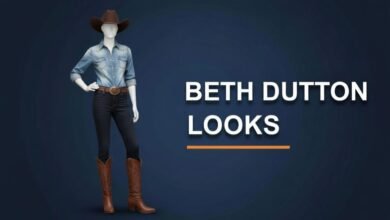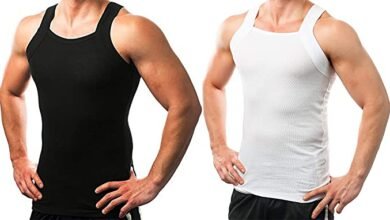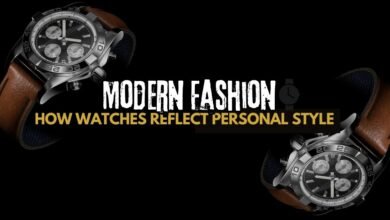Mastering Nahttypen (Seam Types): The Ultimate Guide for Textile Professionals

Seams may seem like a small detail in the larger tapestry of garment-making, but they are the unsung heroes holding every stitch of fabric together. For anyone working with textiles, from fashion designers to industrial manufacturers, understanding “Nahttypen” (the German term for seam types) is essential. Nahttypen influences the strength, aesthetics, and functionality of every textile creation.
If you’re ready to elevate your sewing projects from functional to professional, this guide is your comprehensive resource on Nahttypen, covering everything from basic concepts to advanced innovations in seam technology.
Why Do Seam Types Matter in Sewing and Manufacturing?
Seam types are the structural foundation of any textile product; they are not merely a design decision. Several important factors are ensured by the type of seam, including:
- Durability: Over time, wear and tear is prevented by well sewn joints.
- Shape Maintenance: Clothing keeps its shape and structure thanks to seams.
- Stress Reinforcement: For strength and durability, areas that are prone to tension, such as the knees or shoulders, require stronger seams.
- Aesthetic Finish: Nahttypen plays a big part in making final goods look professional.
Whether you’re working on technological equipment, athletic apparel, textiles, or couture dresses, selecting the right kind of seam helps combine functionality, comfort, and aesthetics.
Exploring Basic Nahttypen
For both novices and experts, knowing the fundamental types of seams is the first step. The most popular Nahttypen are as follows:
Plain Seam (Geradstichnaht)
A plain seam stitches two pieces of fabric edge to edge, making it perfect for woven fabrics. It is the foundation of the majority of sewing projects and is easy to use and adaptable.
French Seam (Französische Naht)
Lightweight materials like silk are ideal for this delicate, polished seam, which encloses bare edges for a smooth finish.
Flat-Felled Seam (Kappnaht)
Flat-felled seams, which are frequently found in outerwear and denim, are strong and stop fraying without further finishing.
Overlocked Seam (Overlocknaht)
This seam finishes raw edges, stitches, and trims all at one. Stretchy materials, such as T-shirts and sportswear, require it.
Each of these Nahttypen serves a distinct purpose by combining advantages specific to its intended use with ease of fabrication.
Advanced Seam Types for Specialized Applications

Advanced seam types are used when making high-performance textiles or technical clothing. These seams satisfy particular design specifications and offer improved functionality.
Double-Stitched Seam (Doppelnaht)
Seams that are double-stitched are stronger. They are appropriate for high-stress regions like the knees and elbows, tactical clothing, and work clothes.
Bound Seam (Einfassnaht)
This seam, which is used to cover raw edges with bias tape, improves durability and creates a detailed contrast. In outerwear or unlined jackets, bound seams are common.
Lapped Seam (Überlappungsnaht)
This seam provides strength and weather resistance by overlapping cloth pieces rather than sewing them edge to edge. It’s a great option for leatherwork or waterproof clothing.
Welded Seam (Geschweißte Naht)
Modern and inventive, welded seams eliminate the need for stitching by bonding fabric with heat and pressure. These are frequently seen in outdoor equipment and waterproof garments.
Nahttypen in Apparel Design
Seams in apparel design provide more than just functionality. They shape silhouettes, underline design aesthetics, and add creative flair. Examples include:
- Princess Seams: Sculpt the body for a tailored look.
- Decorative Topstitching: Adds a high-end finish.
- Flat-Felled Seams in Jeans: Enhance ruggedness and complement stylish designs.
Whether it’s high fashion or functional clothing, the right seam can elevate a garment’s look and feel.
Seam Types in Industrial and Technical Applications
Seams play a critical role outside the world of fashion as well. Technical seams are vital in industries like aerospace, automotive, and medical textiles, where safety, precision, and durability are non-negotiable.
Examples include:
- Ultrasonic Seams: Used in disposable medical attire.
- Tape-Sealed Seams: Found in hazmat suits for airtight protection.
- Reinforced Seams: Essential in tents and outdoor equipment.
Selecting and applying the correct Nahttypen ensures compliance with regulatory standards while maximizing performance.
How to Choose the Right Seam Type
Selecting the perfect seam involves balancing several factors:
- Fabric Type: Woven, knit, or technical fabrics have unique seam requirements.
- Purpose: Aesthetic vs. functional needs.
- Stress Points: Identify areas prone to wear and reinforce them with appropriate seams.
- Cost-Efficiency: Complex seam types may require additional labor or machinery.
For example, sewing yoga leggings demands stretchable overlocked seams for flexibility and durability.
Nahttypen and Fabric Compatibility
Certain seam types work better with specific fabrics. Use this quick compatibility guide to get started:
| Fabric Type | Recommended Seam Types (Nahttypen) |
| Cotton | Plain, French, Overlocked |
| Denim | Flat-Felled, Double-Stitched |
| Jersey | Overlocked, Overstitched |
| Silk | French, Bound |
| Canvas | Lapped, Flat-Felled |
| Nylon | Welded, Bound |
Note: Always consider the fabric’s behavior—such as its tendency to fray, stretch, or shift—when choosing seam types.
Enhancing Seam Durability with Proper Finishing
Unfinished seams can quickly lose their integrity. Here are essential finishing techniques to prolong seam lifespan:
- Serging or Overlocking: Provides a clean, professional finish.
- Bias Binding: Encases raw edges for added durability.
- Pinking Shears: For lightweight, fray-prone materials.
- Zigzag Stitching: Suitable for projects where a serger isn’t available.
Using the right finishing tools can keep your seams intact and visually appealing.
Innovations Shaping Nahttypen
Advancements in technology are redefining how seams are created. Exciting innovations include:
- Laser Cutting: Achieves precision before stitching.
- Heat-Sealing: Perfect for waterproof fabrics.
- Smart Seams: Merge functionality with wearable tech for fitness or medical applications.
Such developments expand the functionality and aesthetics of traditional Nahttypen.
Avoiding Common Seam Mistakes
Even experienced professionals encounter challenges when working with seams. Common pitfalls include:
- Selecting incorrect seams for stretch fabrics.
- Ignoring preshrinking, which causes puckering later.
- Overcomplicating seam types unnecessarily.
- Failing to reinforce stress points like corners or edges.
Recognizing and correcting these mistakes early can save time and effort while improving results.
Elevate Your Craft with Perfect Nahttypen
Nahttypen should be given more credit than they commonly receive because of their capacity to fortify, accentuate, and style everything from industrial textiles to exquisite fashion. Your ability to sew allows you to produce beautiful, long-lasting, and high-quality textile products.
Knowing the function of seams increases the quality of your work, whether you’re making performance clothing or a wedding gown.
Innovate instead of just sewing. The flawless seam is the first step towards your next masterpiece.




